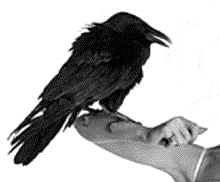Two positions in Göteborg:
New Initiative in Public Learning and Understanding of Science (PLUS)
Due to a generous grant from the Hasselblad Foundation,
Göteborg University (GU) and the Chalmers University of
Technology recently appointed the first Hasselblad Professor of
Public Learning and Understanding of Science (PLUS). The
universities now invite applications for two further positions in
PLUS to be associated with the new Chair and a joint Centre
for PLUS to be launched later on this year. The Chair, the
Centre and the advertised positions will all be hosted by the
Section of Science and Technology Studies (STS) at GU.
Research goals include producing new insights into how people
outside of school learn about and engage with science in
different arenas, studying how the interaction with science can
influence personal and public decisions, and linking public
science practices to broader societal discussions on welfare,
expertise and democracy. Applications from the natural
sciences, social sciences, medicine, humanities and engineering
are welcome to join a team working to better understand and
further stimulate public cultures of science.
|
Ref nr E 36 1879/06
Research Associate - postdoctoral level,
3 year position:
Primary responsibility is to conduct a research project on
PLUS. In addition, the researcher shall assist the Hasselblad
Professor with the running of the new Centre, as well as fulfill
certain teaching obligations. Requires a Ph.D. preferably
addressing science communication practices and the study of
science in public. Experiences with interdisciplinary projects
and the Swedish university system are highly desirable.
Ref nr E 36 1881/06
Ph.D. Candidate
4 year position:
The successful applicant should pursue a Ph.D. project
analysing patterns of public engagement with science in arenas
such as science centers, the Internet, social movements or
patient organisations. Research should aim to relate public
science practices to broader discussions of science, democracy
and citizenship in contemporary knowledge societies. The
applicant must have a B.A. or M.A. degree with a disciplinary
orientation towards STS, in accordance with guidelines set out
at http://www.sts.gu.se/phd.
(Or:
http://www.sts.gu.se/phd/default.html red.)
Fur further information please contact Head of STS Section,
Professor Hans Glimell, + 46 31 773 1314, hans.glimell@sts.gu.se,
or the Hasselblad Professor, Ilan Chabay, + 46 31 773 1321 or
+ 1 3018027729, ilan.chabay@sts.gu.se.
Contact persons for employees' organizations: SACO,
Inger Wilgotson Lundh +46 31 773 1987; OFR/S, Eva Sjögren
+46 31 773 1169; SEKO, Lennart Olsson +46 31 773 1173.
Applications, including documents specified above and bearing
the reference number, should be sent to: Göteborgs universitet,
Samhällsvetenskapliga fakultetskansliet, Box 720,
SE-405 30 Göteborg.
Applications should be received no later than May 31, 2006
(the paper documents should bear the post cache with a date
previous or coincident with the deadline).
1020-06 155x160 GU tina.indd 1 2006-04-27 10:35:32
|
